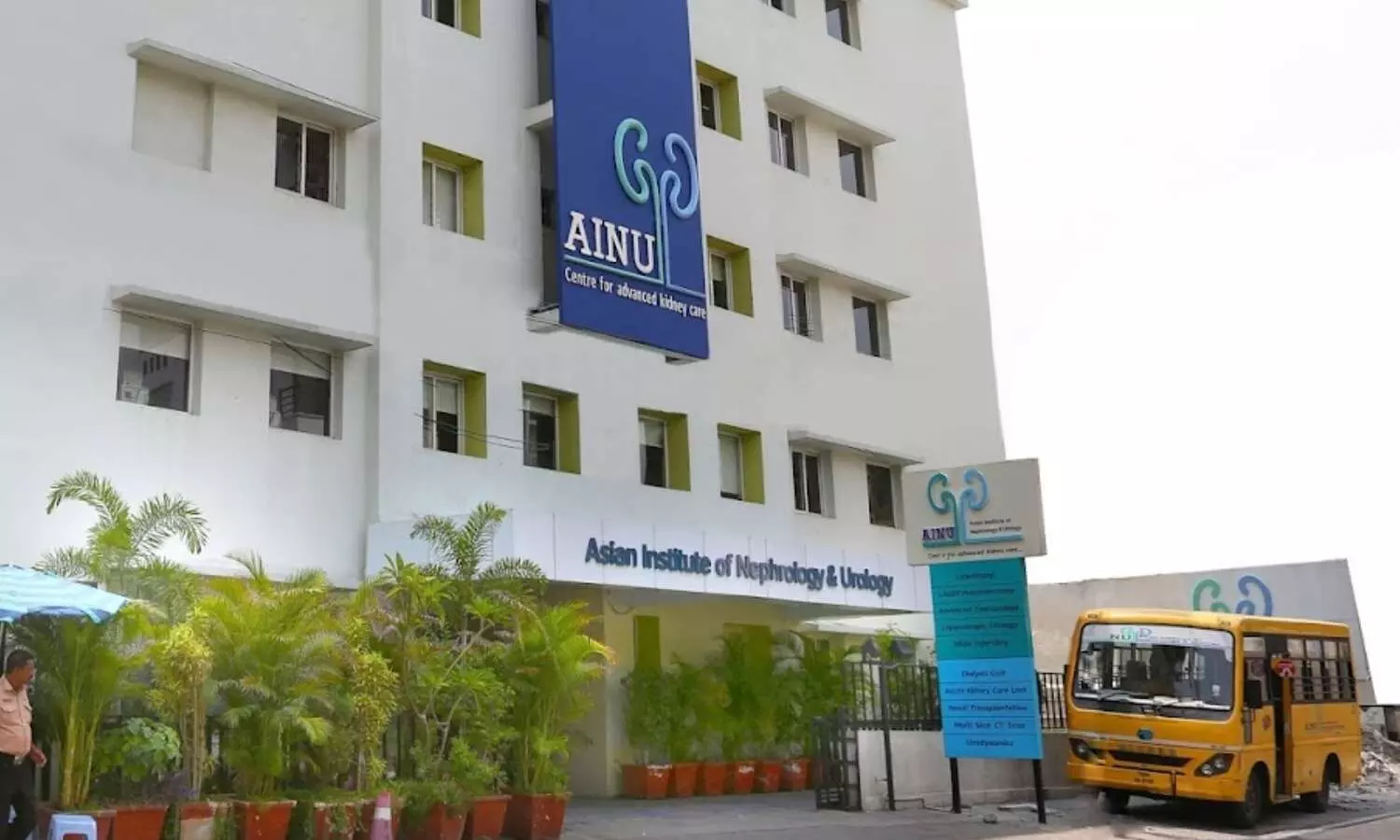Tirzepatide found to reduce body weight, waist circumference in those with obesity regardless of duration of condition
Powered by WPeMatico
Powered by WPeMatico
Powered by WPeMatico
Powered by WPeMatico
Powered by WPeMatico

The “EVER-Vilda” opinion paper is an Indian expert’s evaluation of the efficacy and rationality of vildagliptin. It underscores vildagliptin’s versatile applicability, safety and provides practical guidance for healthcare professionals regarding the use of Vildagliptin in T2DM care.
This expert consensus article has been published in the February 2024 issue of the Journal of Clinical Medicine Insights: Endocrinology and Diabetes.
A panel of 25 experts, including endocrinologists, diabetologists, and cardiologists from India, convened for two advisory board meetings to discuss the various roles and combinations of vildagliptin in managing T2DM.
Some of the final consensus statements include:
1. Vildagliptin 100mg SR OD is a practical therapeutic alternative to 50mg IR BID formulation to improve adherence and persistence.
2. Vildagliptin 100mg SR OD dose is equally effective as 50mg twice daily vildagliptin regarding HBA1c, fasting, and postprandial blood glucose levels.
Adapted from:
1. Kalra S, Zargar AH, Sridhar G, et al. Expert eValuation of Efficacy and Rationality of Vildagliptin “EVER-Vilda”: An Indian Perspective. Clinical Medicine Insights: Endocrinology and Diabetes. 2024;17. doi:10.1177/11795514231203911
Powered by WPeMatico
Powered by WPeMatico

Ahmedabad: The sudden demise of a Bachelor of Ayurvedic Medicine and Surgery (BAMS) female doctor has stirred up controversy, with 22 individuals holding a police inspector accountable for allegedly driving her to suicide.
The lifeless body of the doctor was discovered on a bench near the Vasant-Rajab memorial within the confines of the Gaekwad Haveli compound, home to the city crime branch, Economic Offences Wing (EOW), and Gaekwad Haveli police station.
Powered by WPeMatico

A recent post hoc analysis of the Women’s Health Initiative CaD trial found calcium and vitamin D (CaD) to reduce cancer mortality among the postmenopausal women. The key highlights were published in the Annals of Internal Medicine.
The findings of this research suggest that while calcium and vitamin D supplementation may have an impact on chronic diseases in older women, the evidence regarding its long-term effects on health outcomes remains limited. The multicenter trial was conducted across 40 locations in the US and included the participants with no history of breast or colorectal cancer. Over 36,000 women were randomly assigned to either receive 1000 mg of calcium carbonate with 400 IU of vitamin D3 daily or a placebo.
After a median cumulative follow-up of 22.3 years, this research observed a 7% reduction in the cancer mortality among the women who received CaD supplements when compared to the placebo group. However, there was also a 6% increase in cardiovascular disease (CVD) mortality among the CaD group.
The study did not find any overall effect on all-cause mortality, although the estimates for cancer incidence varied depending on whether participants reported supplement use before randomization. The outcomes such as hip fracture and CVD were only noticed in a subset of participants and the effects of calcium versus vitamin D versus joint supplementation could not be fully distinguished. Overall, the calcium and vitamin D supplements appeared to have long-term effects on the postmenopausal women’s health, with a reduction in cancer mortality but an increase in CVD mortality.
Reference:
Thomson, C. A., Aragaki, A. K., Prentice, R. L., Stefanick, M. L., Manson, J. E., Wactawski-Wende, J., Watts, N. B., Van Horn, L., Shikany, J. M., Rohan, T. E., Lane, D. S., Wild, R. A., Robles-Morales, R., Shadyab, A. H., Saquib, N., & Cauley, J. (2024). Long-Term Effect of Randomization to Calcium and Vitamin D Supplementation on Health in Older Women. In Annals of Internal Medicine. American College of Physicians. https://doi.org/10.7326/m23-2598
Powered by WPeMatico

According to a study published in The BMJ, cervical pessary may be less effective than vaginal progesterone in reducing adverse perinatal outcomes in women with a singleton pregnancy with no prior spontaneous preterm birth of less than 34 weeks’ gestation and with a cervical length of 25 mm or less.
Preterm birth is the most important problem in obstetric care and globally the most important cause of neonatal mortality, morbidity, and subsequent neurodevelopmental disorders. Progesterone is widely understood to reduce preterm birth in pregnant women with a short cervical length. A second potential preventive treatment is the use of a cervical pessary, which was reported to reduce preterm birth at less than 34 weeks in women with a singleton baby and a cervical length of less than 25 mm.
The Amsterdam UMC research team studied the optimal treatment for pregnant women with a cervical length shorter than 25 mm at the 20-week ultrasound. Eligible participants had a healthy singleton pregnancy and a cervical length of 35 mm or less between 18 and 22 weeks gestation. Those assigned to the pessary group received an Arabin25 cervical pessary, removed at 36 weeks. Participants in the progesterone group self-administered 200 mg vaginal progesterone capsules daily until 36 weeks. Data collection included maternal and obstetric history, pregnancy details, and neonatal outcomes, with follow-up until 10 weeks after the due date.
The results revealed that in women who had singleton births with no prior spontaneous preterm birth of less than 34 weeks’ gestation and with a mid-trimester cervical length of 35 mm or less, pessary did not improve perinatal outcome compared with progesterone. In the subgroup of a cervical length of 25 mm or less, differences seemed larger in favour of progesterone, especially for extremely preterm birth at less than 28 weeks.
“This is an important improvement that can contribute to the reduction of preterm births and the associated complications, such as an increased risk of infant mortality and long-term health problems for the child,” said Eva Pajkrt, professor of obstetrics at Amsterdam UMC. “Based on our study, we recommend measuring the length of the cervix of all pregnant women during the 20-week ultrasound. Women with a cervix shorter than 25 mm should be informed about the possibility of treatment with Progesterone.”
Reference: Charlotte E van Dijk, Annabelle L van Gils, Maud D van Zijl, Bouchra Koullali, Eline S van den Akker, Brenda J Hermsen, Wilhelmina M van Baal, Henricus Visser, Yolanda M de Mooij, Martijn A Oudijk, Ben WJ Mol, Brenda M Kazemier, Eva Pajkrt; Journal: The BMJ; DOI: 10.1136/bmj-2023-077033
Powered by WPeMatico

Hyderabad: In a groundbreaking medical achievement, the team of expert urologists at the Asian Institute of Nephrology and Urology, Banjara Hills, Hyderabad, has successfully removed 418 kidney stones from a patient with only 27% kidney function.
This remarkable feat was accomplished through a minimally invasive procedure, marking a significant advancement in surgical techniques for kidney stone removal.
The patient, Mallesh, a 60-year-old man, presented a unique challenge with an unprecedented number of kidney stones and severely impaired kidney function. Rather than opting for a conventional, more invasive approach, the team, led by Dr K Purna Chandra Reddy, Dr Gopal R. Tak, and Dr Dinesh M, chose to utilize percutaneous nephrolithotomy (PCNL), a minimally invasive technique.
PCNL involves making small incisions through which specialized instruments, including a miniature camera and laser probes, are inserted into the kidney. This allows surgeons to precisely target and remove the stones without the need for large surgical openings, minimizing trauma and expediting recovery for the patient. Doctors advised to take more water and less salt during summer.
The intricate procedure, which required exceptional skill and precision, unfolded over two hours as the surgical team meticulously removed each stone, navigating through the intricate network of the urinary tract. Advanced imaging technology and state-of-the-art equipment played a crucial role in addressing the extensive stone burden while preserving the delicate balance of kidney function.
The successful removal of 418 kidney stones through small keyholes in the kidney represents a triumph of medical innovation and expertise. This achievement not only highlights the potential of minimally invasive techniques in treating complex urological conditions but also offers hope to patients facing similar challenges worldwide.
As the medical community celebrates this remarkable milestone, it serves as a testament to the unwavering commitment of healthcare professionals to push the boundaries of what is possible. The story of Mallesh and the groundbreaking efforts of the medical team at the Asian Institute of Nephrology and Urology exemplify the relentless pursuit of excellence in the quest to improve patient care and outcomes.
This remarkable feat is not only a testament to the power of innovation but also a beacon of hope for patients around the world grappling with kidney stones and related conditions. As technology continues to advance and surgical techniques evolve, the future of healthcare holds promise for even more extraordinary achievements in the field of urology.
Powered by WPeMatico
